Paradise Killer devs on the benefits of being really, really weird
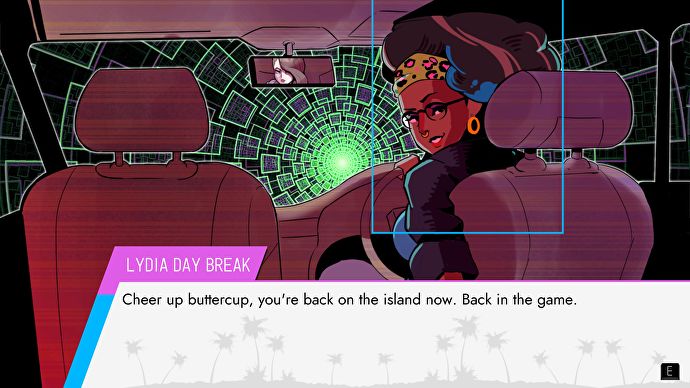
In a move befitting a game about immortal beings who live out countless repeating lives on artificial islands powered by human sacrifice, Paradise Killer is getting a re-release. Sort of. It’s coming to next-gen consoles today, with all platforms (including PC) getting some extra bits added for free that weren’t in the original 2020 release. Not bad for a game that Kaizen Game Works creative director Oli Clarke Smith thought would only really sell to “a niche of freaks”. If you’re not one of those freaks, I’d heartily recommend becoming one. Playing Paradise Killer is like going to a seaside cosplay party where police procedures play on loop and cocktails are snorted in a dehydrated powder form. It is a meticulously authored murder mystery with a cast of freaks.
When I sat down to talk to both Clarke Smith and technical director Phil Crabtree about Paradise Killer’s new update, it turned out that niche has already become quite large. Even Crabtree’s dad has played Paradise Killer, though Crabtree isn’t sure he really understood it. Crabtree also tells us he sometimes get messages from friends saying someone they know just played Paradise Killer and was talking about it. “It just seems so weird that there is this audience there that we never expected, and it doesn’t seem that far away,” he says. “Like, it’s not this mystery group of people, there always seems to be some connection that’s quite close to you.”
Crabtree and Clarke Smith are high on their own product in quite a refreshing way. “Phil and I have both worked in places where people would stop us from doing cool stuff, because the games were supposed to be more mainstream,” explains Clarke Smith, whose previous credits include Until Dawn and The Dark Pictures Anthology: Man Of Medan. “But when we expected [Paradise Killer] to sell five copies, and for us to set fire to all our savings and then go back to work having made something cool but that isn’t commercially viable, it’s like, well, we just don’t care. Let’s just go for it.”
“There’s a lot of trust there,” says Crabtree. “Like just okay, this seems cool to us. Let’s just keep kind of going with it. In terms of the world and the weirdness, if it felt right it kind of just went in – and I think perhaps we both lost track of the weirdness of it towards the end. Like, well, to us this seems pretty normal now.”
He admits, though, that for newcomers to Paradise Killer, it’s “quite an assault of weirdness at the start”, and he’s right. Coming back to it now, it’s really hard to overstate how completely alien Paradise Killer feels within an understandable framework. But he’s also right when he says that’s what the game needed. “We’ve not really tried to compromise on that too much,” he adds.

Not that they didn’t go through some iterations. Clarke Smith had never done game art before, and so in the first version of Paradise Killer’s world, the saturation levels on the post process was “dialed all the way up,” he tells us. “The sky was like, aggressively neon, and it was just way too much.
“The sky was like, aggressively neon, and it was just way too much.”
“Then Rachel [Noy, art director] Took some time to play with the lighting and play with the post process,” he explains. “And like, the shadows became softer, the light became brighter and hazier and softer. And that creates the otherworldly feel rather than just, ‘Well, what happens if I put this slider all the way to the end?'”
There was also a placeholder UI that Crabtree says was “a lot more grays and browns” until Clarke Smith came up with the idea of leaning into the influence of Japanese city pop – bright blues, pinks and yellows. They broke down city pop album covers into shapes and styles, and then matched each screen of the UI to one of them.
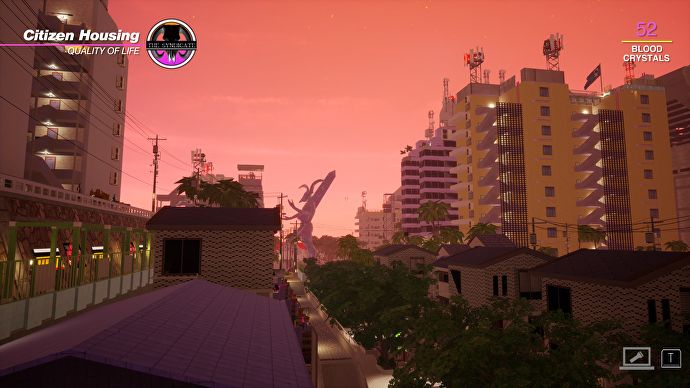
Some of the characters, who appear as 2D beauties in a 3D world not too dissimilar from Spike Chunsoft’s Danganronpa series, were transplanted from older ideas, like the armored super-nark Grand Marshal Akiko 14, or doomed lovers Sam and Lydia Daybreak (a red skeleton who refused to die and a cool taxi driver, respectively). A lot of it, though, was a process of evolution: we’ve got this cool idea, let’s put it in. Shinji, a bright blue demon with a foxy face and a cuboid head who is constantly giving the double middle finger to the world (see below), evolved from the idea of having a mascot. “So we made one that no digital storefront will allow us to put pictures of,” says Clarke Smith. A significant influence was JoJo’s Bizarre Adventure, where characters “are acting like everyone looks like them… and they’re all freaks.”
Crabtree again emphasizes that this is a weird island, and the characters continually ground that feeling. Every interaction with them is a reminder that this world doesn’t follow normal rules. “And why not? This was our one chance to make the a game. Go wild!” Although Clarke Smith follows this up by saying that people thinking Paradise Killer is so strange also “speaks to how normie a lot of video games are.”
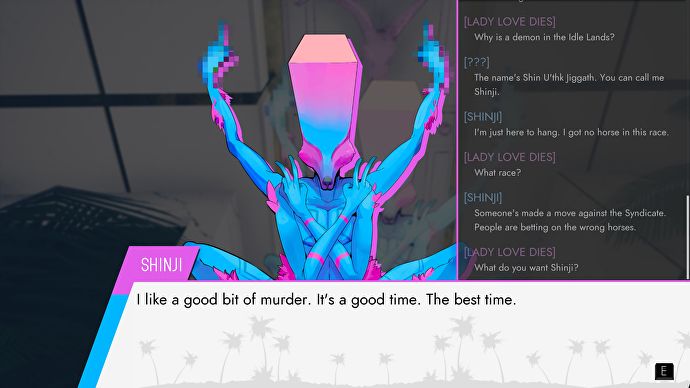
“When you make a video game you can do anything,” he says. “And, like, just have some fun, and just stop making boring normie characters that you want, that you would go to the cinema to see, like, do something weirder.” This makes me laugh, because I have never heard anyone use the term “normie” in an interview, and have now heard it twice. I point this out and they both laugh as well. “I’ll just rein myself in before I say something I’ll regret,” says Clarke Smith. “But I think, like, there’s no reason for so many games to be so pedestrian in their character design. More and more people will accept more and more different styles and characters and… just go wild. Just go absolutely hog wild on it, who cares?” Though he does laugh again and acknowledge someone spending $100 million on a game would probably say let’s not go hog wild.
In some ways, it feels odd to see a game like Paradise Killer getting new stuff. This updated version does have some technical improvements – Crabtree says one of his favorite additions is the way the haptic feedback on the PS5 controller feels, an answer at which I, your dedicated PC-only correspondent, protest. “How do you like the sound of DLSS?” says Clarke Smith, jumping in to add that the PC version does have some extra tech improvements, what with PCs being able to support things consoles don’t. “So there are some exclusive things. Which Phillip can talk about because they’re a lot of acronyms.”
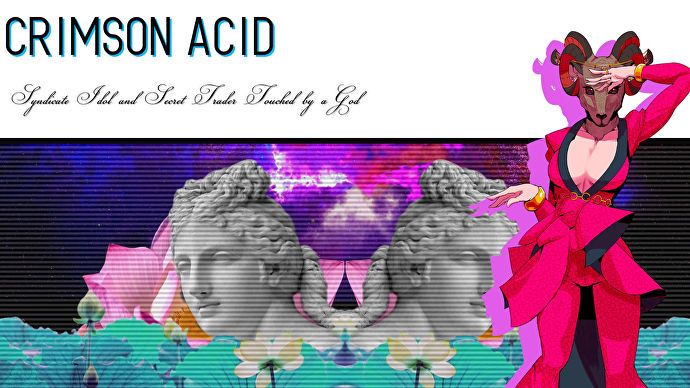
And Crabtree is, indeed, able to elaborate: “We’ve now got your DirectX 12 ray tracing mode and we integrated DLSS for extra performance. And there’s just lots of little tweaks that have gone in around that, and lots of little performance tweaks and optimisations that we didn’t quite have time to get done.”
But in terms of the actual content of the game, the business of solving a mass-murder on a preternaturally strange island, Paradise Killer just feels very complete. A finished thing that you can’t easily crack open and add to, like a satellite in orbit, or a lasagne.
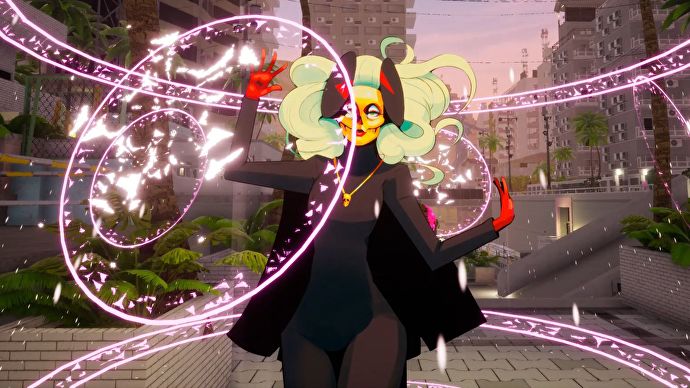
“I think that we shipped with a game that had everything in that we wanted to put in, bar maybe a rideable jetski,” says Clarke Smith. “We didn’t end Paradise Killer thinking, ‘God, I wish we’d put this in.'” Rather, he says, they’d been so blown away by its reception that when the opportunity to port the game to consoles came around, they thought adding some extra free stuff would be cool. However, the team chose to have one important restriction: they wouldn’t touch the main story. There are some new characters in the update, for example (although details of what they’re about were kept close to the proverbial during our chat), but inserting a new member of the Syndicate (the core group of powers who sustain immortality with the worship of dead alien gods) would require a lot of extra work to explain how and why they weren’t involved in the murder mystery plot.
“I didn’t want to feel that someone’s playthrough would be invalidated by adding any more to that to the main story,” says Clarke Smith, and Crabtree agrees. “We’ve been so careful about that all the way through the game to make sure that your choices are reflected,” adds Crabtree. “If we just add in this whole new thing that could potentially change the outcome or your understanding… It doesn’t feel very fair. So that’s why we want to try and keep it keep away from editing story.”
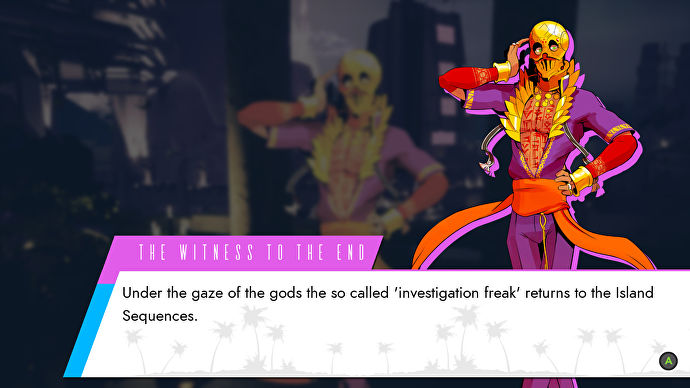
One of the largest new additions is a whole album of B-sides from composer Barry “Epoch” Topping, of whom Clarke Smith says simply that “he gets it.” the original soundtrackcapturing what Clarke Smith calls a “luxurious island vibe”, is the essential weft to Paradise Killer’s warp, and has absolutely no business going as hard as it does.
“In the past we’d talked about how it would be cool to put out a B-sides album, but it was very much before Paradise Killer came out,” says Crabtree. “I’m a sucker for vocal tracks, I love vocal tracks, so I really wanted to see more of them in there.” The plan, then, was initially for some remixes of existing tracks, but then they realized adding new content could come with new songs – so we get three new tracks. And these are acquired in the game in a different way, via three new side characters.
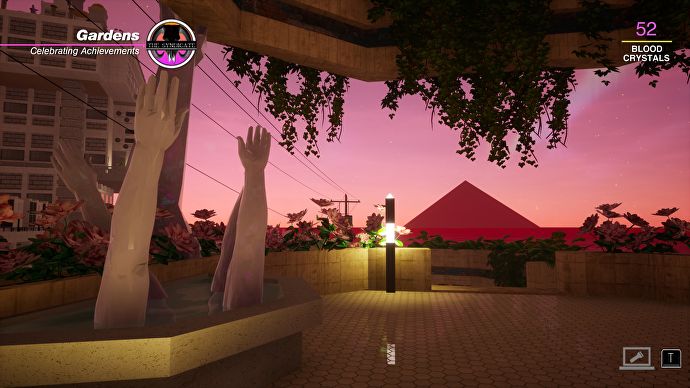
Kaizen are currently working on their new game, the Cliff Notes for which are “bigger, and different, and not the same genre at all“. They’re trying to establish a Kaizen Game Works house style, though, so you’re “kind of vibing with the way we like to do stuff”, says Clarke Smith, even though the art style for this second game is, he says, wildly different.
“Our core principles about player discovery and player agency and weird characters are there.” A lot of the character design this time is being done by Ikumi Nakamura (yes, that Ikumi-Nakamura). According to Clarke Smith, even if they told me what the concept was, the characters would still be unexpected. “The idea of it immediately hooks, I think, certainly us,” says Crabtree. “It’s very different, but with the same kind of heart, is how I like to see it.” They hope to show something later this year. Which probably makes now an ideal time to revisit Paradise.
Reference-www.rockpapershotgun.com